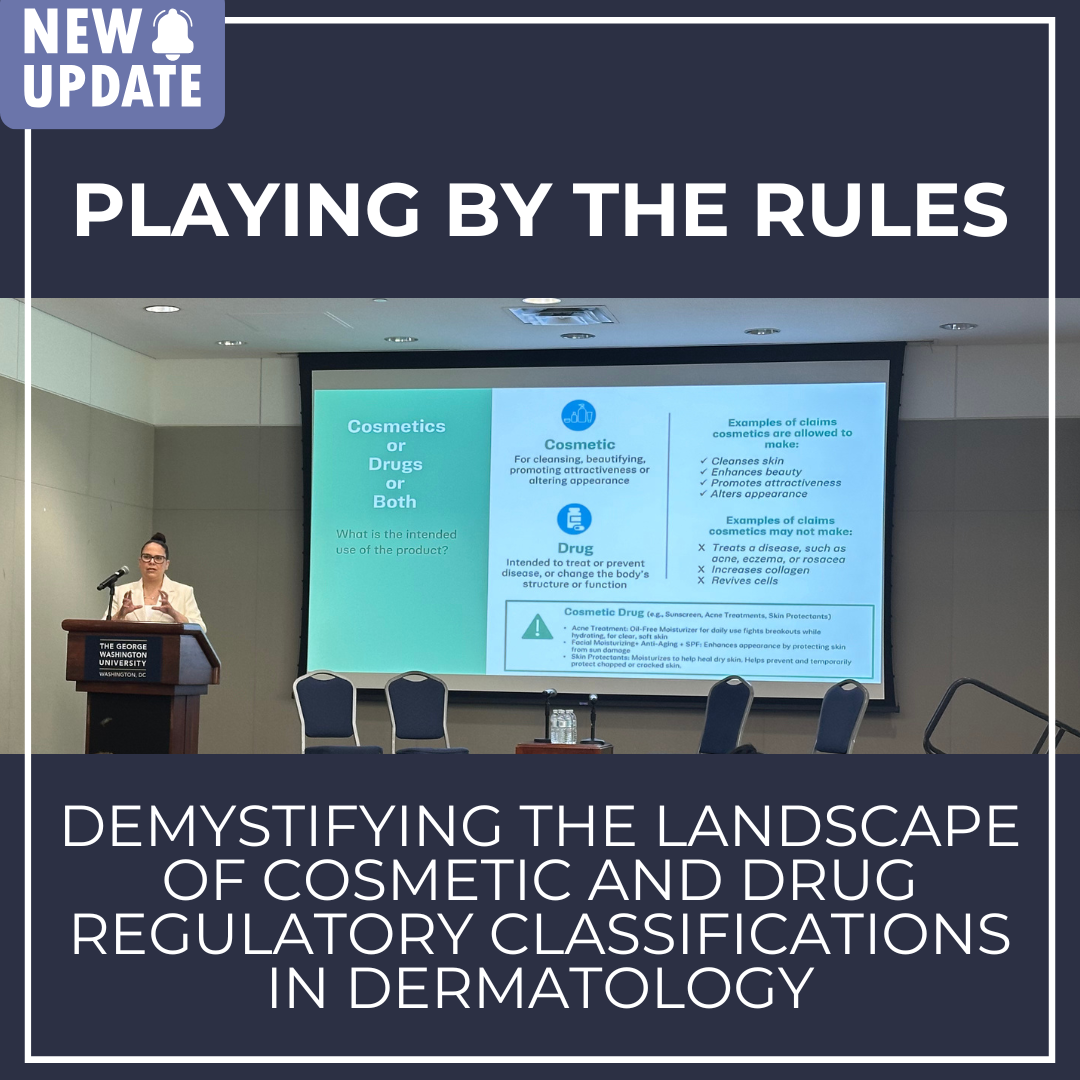If you have ever wondered how an ingredient progresses from the laboratory bench to the beauty aisle, or why some products make bold efficacy claims while others remain vague, the field of regulatory affairs is the answer. Acting as the bridge between product innovation and the FDA, regulatory professionals ensure that skin care products of all kinds are compliant with U.S. law. In this session at the recent Lab to Label Conference, Marelys Figueroa, the Associate Director for Regulatory Affairs at Kenvue, provided an introductory crash course on regulatory affairs for dermatologists.
Cosmetic vs. Drug: The Crucial First Step
The regulatory journey begins with a simple, but high-stakes, question: What is the intended use of this product? Products designed to cleanse, beautify, or alter attractiveness/appearance (think lip gloss or facial mists) are classified as cosmetics. However, anything that claims to treat or prevent disease (think acne, eczema, collagen loss) or changes the body’s structure or function, falls under the FDA’s definition of a drug. This is where the distinction can become complex, as many products, particularly in dermatology, straddle the line between these two categories. Consider facial moisturizers, for instance. If a product merely hydrates the skin and enhances its appearance, it is classified as a cosmetic. However, if it also purports to reduce wrinkles or contains a UV filter to prevent sunburn, it is considered a combination product (i.e., a cosmetic-drug) and is therefore subject to additional regulatory requirements.
Cosmeceuticals, a term widely used by marketers but not recognized by the FDA, exist in a gray zone. Ingredients like retinol, peptides, and antioxidants fall here. While they offer anti-aging or skin-smoothing benefits, brands must use cosmetic-friendly language like “improves the look of fine lines” instead of “stimulates collagen production” as the latter implies structural change, which qualifies as a drug claim.
OTC Monographs: Your Ingredient Playbook
For drug ingredients, companies must refer to FDA-issued OTC (over-the-counter) monographs, which act as a blueprint for their use. These documents specify which active ingredients can be used, in what concentrations, and what efficacy claims are allowed. Labeling requirements vary by product type. Monographs also dictate label language, directions for use, and required warnings – all to ensure consistency and safety across the marketplace.
For dermatologists, two monographs are particularly relevant: the acne monograph and the skin protectant monograph. The acne category covers popular ingredients like adapalene, benzoyl peroxide and salicylic acid and includes standard claims like “treats acne,” “clears blemishes,” or “prevents new breakouts.” Since many products use the same actives, the differentiator becomes how effectively the formulation delivers those ingredients. The skin protectant monograph includes ingredients like colloidal oatmeal, dimethicone, petrolatum, and zinc oxide. Here, again, the language matters – a product claiming to “moisturize dry, itchy skin” is making a drug claim, however, a product claiming to “soothe itchy, dry skin,” is a cosmetic.
The Evolving Landscape of Sunscreen Regulation
Sunscreens occupy their own regulatory category, and the rules are changing. While zinc oxide and titanium dioxide are considered GRASE (generally recognized as safe and effective), the FDA is currently reevaluating 12 chemical filters, including avobenzone and oxybenzone. The agency is requesting more safety data, including animal studies, before issuing a final administrative order. Proposed changes to the sunscreen monograph include SPF caps (likely 60+), revamped labeling requirements, potential regulation of spray formats, and front-of-pack active ingredient disclosures. If the new rules are finalized, sunscreen formulations will need to adapt.
Conclusion
Regulatory teams don’t just keep brands out of legal trouble – they help them thrive in a crowded marketplace. By staying on top of trends, parsing social media claims, and guiding product teams through complex rules, they ensure innovations stay compliant without sacrificing marketing impact. In a field like dermatology, where science and cosmetics intersect daily, this behind-the-scenes work is essential.
About the author
 Savanna Vidal is a medical student and pre-doctoral research fellow in the Department of Dermatology at the George Washington University School of Medicine and Health Sciences.
Savanna Vidal is a medical student and pre-doctoral research fellow in the Department of Dermatology at the George Washington University School of Medicine and Health Sciences.
Did you enjoy this article? You can find more on Medical Dermatology here.

